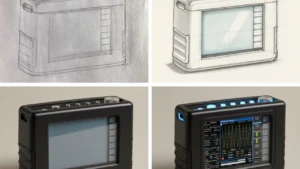A Sustainable Soar: Europe’s Pledge to Greener Skies
In a world increasingly attuned to environmental responsibility, the aviation industry in Europe is setting a momentous precedent. Several prominent aviation organizations, including IATA, A4E, European Regions Airline Association, ACI Europe, and CANSO, have united in a collective effort to propel air travel toward a more eco-friendly future. Their shared mission aligns perfectly with the European Union’s Green Deal decarbonization goals, illustrating the industry’s dedication to sustainability.
The broader vision is nothing short of transformative. The European aviation sector aims to emerge as a global exemplar of efficiency and environmental consciousness. Central to this ambition is the optimization of the European air traffic management (ATM) system, a linchpin in the battle to curb emissions. The industry recognizes that to achieve this, innovation in ATM must be at the forefront of its endeavors.
Digital innovation within ATM offers a pathway to enhanced operational efficiency and environmental mitigation. The deployment of advanced digital tools developed under the aegis of the EU’s Single European Sky ATM Research Programme (SESAR) is considered pivotal. This infusion of cutting-edge technology is set to revolutionize the way European skies are managed, driving down carbon emissions while increasing capacity to meet the burgeoning demand for air travel.
The initial step in this transformation is the collaborative update of the EU ATM Master Plan. This plan serves as a compass, offering a shared roadmap for SESAR and providing a unified approach to address non-CO2 emissions’ impact. As the participating associations work in concert to recalibrate this plan, they aim to develop cooperative tools that incorporate non-CO2 emissions into flight planning and capacity management. This step underscores the industry’s commitment to addressing a broad spectrum of environmental concerns.
The timeliness of this endeavor is underscored by the impending rebound of European passenger traffic, anticipated to return to pre-pandemic levels by 2024. A swift and efficient response is imperative, and the innovation in ATM appears to be the ideal answer. By making immediate improvements, such as enhancing flight efficiency and reducing emissions, the aviation industry aims to align itself with the Green Deal’s goals while embracing the resurgent demand for air travel.
This collaborative drive for improved air traffic management complements the industry’s long-term sustainability endeavors. While sustainable aviation fuel (SAF) and the development of zero-emission aircraft are vital pieces of the puzzle, these are longer-term investments. By enhancing air traffic control now, the industry can yield substantial reductions in emissions, bringing tangible benefits to environmental well-being. The aviation industry, it seems, is committed to adopting a holistic approach, mitigating its carbon footprint through immediate action and ongoing investment in greener technologies.
In a broader context, this collaborative effort in Europe underscores the heightened focus on ESG metrics – environmental, social, and governance programs – globally. Organizations are becoming increasingly accountable for their societal impact, acknowledging the crucial role they play in addressing climate change. This drive towards sustainability is not confined to just the aviation sector but is emblematic of a global shift toward responsible and environmentally conscious business practices.
Moreover, business aviation, despite its traditional reliance on jet fuel and concerns about carbon emissions, has found itself at the forefront of sustainability initiatives. Smaller fleets offer greater agility and flexibility for testing and implementing sustainable solutions. This sector is evolving into an incubator for innovative technologies that have the potential to reshape the entire aviation industry.
Emerging flight-planning technologies are another promising avenue in the quest for greener skies. These tools empower flight crews to make environmentally responsible choices while in the air, minimizing fuel consumption and climate impact. The industry’s recognition of the potential of these technologies underscores its commitment to making responsible decisions, even in the midst of flight.
As sustainable aviation fuel (SAF) becomes an integral component of the aviation landscape, organizations are exploring alternative sources to reduce carbon emissions. These SAF solutions, derived from feedstocks such as agricultural waste, forestry products, and biologically derived hydrocarbons, present a viable means of decreasing the industry’s carbon footprint. Despite challenges related to sourcing and cost, the availability of SAFs today demonstrates the industry’s willingness to take immediate steps toward sustainability.
The research focused on the climate impact of contrails, those linear clouds left in the wake of aircraft, underscores the industry’s dedication to addressing all facets of environmental concern. Efforts to predict and mitigate the effects of contrails are underpinned by the recognition that a comprehensive approach is required to combat climate change fully.
Europe’s aviation industry’s commitment to a sustainable future is a beacon of hope in an era grappling with the urgent need for environmental responsibility. The collaborative spirit among major organizations, innovative ATM technologies, and a multi-faceted approach to sustainability underscore the industry’s dedication to making a meaningful impact on the environment, industry competitiveness, and the well-being of the citizens it serves. As the aviation sector redefines its path toward greener skies, it offers an inspiring example of how industries can lead the charge toward a sustainable future.








